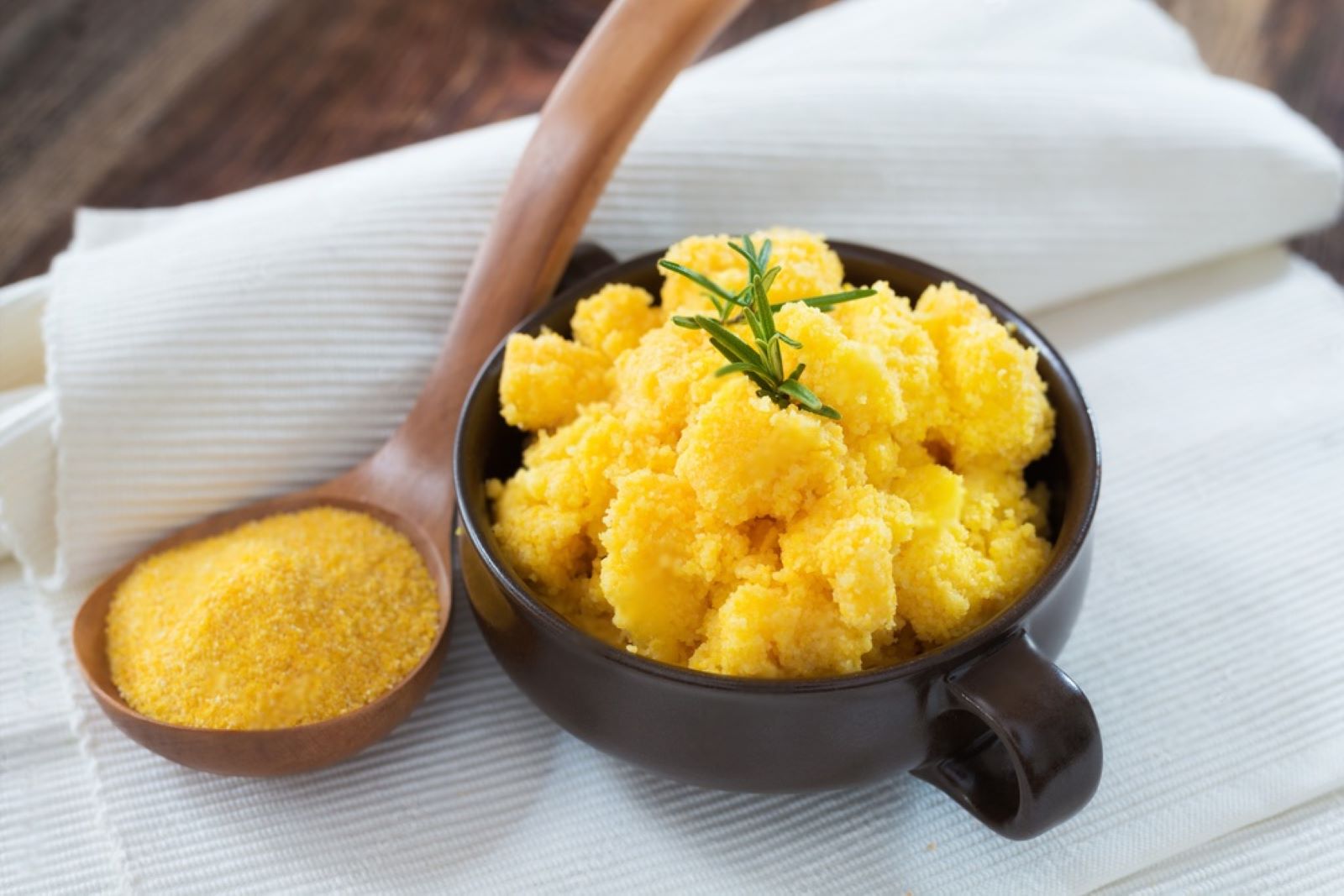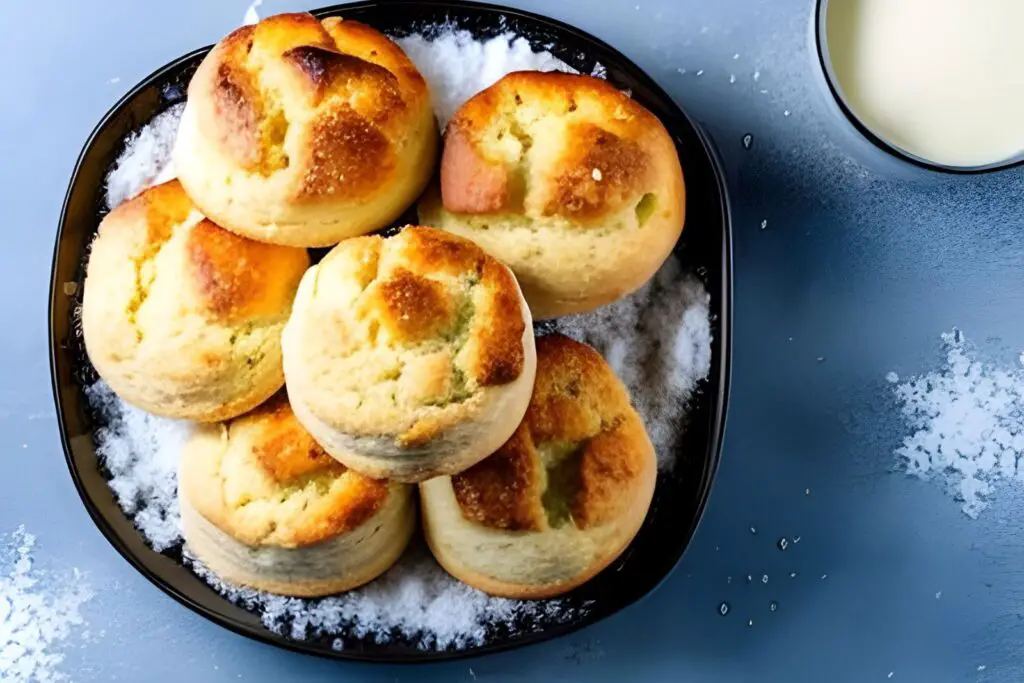
Polenta is a versatile and delicious dish made from cornmeal that is popular in Italian cuisine. It can be served creamy and hot, or allowed to cool and solidify into a firm loaf that can be sliced and fried or grilled. If you find yourself with leftover polenta or want to prepare a larger batch in advance, freezing is a great option to ensure its long-term preservation. Freezing polenta is a simple process that can help you save time and have a convenient meal option on hand. In this article, we will provide you with a step-by-step guide on how to freeze polenta properly to maintain its taste and texture.
Here’s a guide on how to freeze polenta:
Step 1: Cook the polenta
To begin the process of freezing polenta, you’ll need to prepare a fresh batch according to your preferred recipe. Polenta is typically made by slowly cooking cornmeal in water or broth until it thickens and reaches a smooth and creamy consistency. The cooking time can vary depending on the type of cornmeal used and the desired texture.
To cook the polenta, start by bringing water or broth to a boil in a large saucepan. The ratio of liquid to cornmeal is usually 4:1, but be sure to check your specific recipe for exact measurements. Once the liquid is boiling, gradually whisk in the cornmeal to prevent lumps from forming. Lower the heat to a simmer and continue cooking the mixture, stirring frequently, to prevent it from sticking to the bottom of the pan.
The cooking process can take anywhere from 20 to 45 minutes, depending on the type of cornmeal and the desired consistency. Some recipes call for adding butter, cheese, or herbs to enhance the flavor of the polenta. Feel free to customize it according to your taste preferences.
The polenta is ready when it becomes thick and creamy, with a smooth texture. You can test its doneness by tasting a small amount to ensure that the cornmeal is cooked through and no longer grainy. Once the polenta reaches the desired consistency, remove it from the heat and proceed to the next step of the freezing process.
Cooking the polenta thoroughly is crucial before freezing it, as it ensures that the cornmeal is fully cooked and will maintain its quality during freezing and reheating. A well-cooked polenta will freeze better and retain its texture and flavor when thawed and reheated later.
Can I freeze leftover polenta?
Yes, you can freeze leftover polenta. It is a convenient way to store any excess polenta for future use. Allow the leftover polenta to cool completely before transferring it to a freezer-safe container or bag, ensuring that it is tightly sealed to prevent freezer burn. When properly stored, frozen leftover polenta can be safely enjoyed later with minimal impact on its taste and texture.
Step 2: Allow the polenta to cool
Once you have cooked the polenta to a smooth and creamy consistency, it’s important to allow it to cool before proceeding with the freezing process. Cooling the polenta properly helps to prevent condensation and ice crystals from forming, which can affect the texture and quality of the frozen polenta.
To cool the polenta, transfer it from the saucepan to a wide, shallow dish. The shallow dish provides a larger surface area, allowing the heat to dissipate more quickly and promoting even cooling. Spreading the polenta evenly in the dish ensures that it cools uniformly, avoiding any potential hot spots.
By allowing the polenta to cool in a shallow dish, you’re enabling the excess heat to escape more efficiently. This step helps to minimize the risk of bacterial growth that can occur when hot food is left to cool slowly in a deep container. Cooling the polenta properly also reduces the overall freezing time, which is beneficial for preserving the quality of the final product.
It’s important to note that you should not leave the polenta at room temperature for an extended period, as this can lead to food safety concerns. Aim to cool the polenta to room temperature within two hours, and then promptly move on to the next step of the freezing process.
Step 3: Cut the polenta into portions
After the polenta has cooled completely in the shallow dish, the next step is to cut it into individual portions. This step allows you to conveniently freeze and thaw only the amount of polenta you need for each serving, making it easier to use later without having to thaw the entire batch.
To cut the polenta, you can use a sharp knife or a cookie cutter, depending on the shape you desire. If you prefer square or rectangular portions, use a knife to slice the polenta into even-sized pieces. For more creative shapes, such as circles or other decorative shapes, a cookie cutter can be a fun option.
When cutting the polenta, consider the portion size that works best for your needs. Smaller portions may be suitable for individual servings, while larger portions can be ideal for family meals or gatherings. Keep in mind that smaller portions will thaw and reheat faster than larger ones.
The ability to shape the polenta portions allows for customization and presentation. Whether you prefer uniform squares, circles, or more whimsical shapes, this step adds a personal touch to your frozen polenta.
By cutting the polenta into individual portions, you have greater flexibility in using only the amount you need for each occasion. This makes it easier to control portions and minimize food waste. It also allows for quicker and more efficient thawing and reheating when you’re ready to enjoy the polenta later.
Can I freeze polenta in batches to have it readily available for future meals?
Yes, freezing polenta in batches is a great way to have it readily available for future meals. Prepare and cook the polenta as usual, allowing it to cool completely before portioning it into desired serving sizes. Place each portion in a freezer-safe container or bag, label them with the date, and freeze. This way, you can easily thaw and reheat individual portions whenever you crave polenta, saving time and effort in the kitchen.
Step 4: Wrap the polenta portions
After cutting the polenta into individual portions, the next step is to wrap each portion tightly to protect it during freezing. Wrapping the polenta portions properly is crucial for maintaining their quality, preventing freezer burn, and retaining moisture.
To wrap the polenta portions, you have a couple of options: plastic wrap or aluminum foil. Both materials work well for freezing polenta, so you can choose the one that is most convenient for you.
If using plastic wrap, place a portion of polenta in the center and fold the sides of the plastic wrap over it. Gently press and shape the plastic wrap around the polenta, ensuring it is completely covered and there are no air pockets. Twist the ends of the plastic wrap to secure it tightly. Repeat this process for each polenta portion.
Alternatively, if using aluminum foil, cut a piece large enough to wrap around the polenta portion fully. Place the polenta in the center and fold the edges of the foil over it. Press and shape the foil around the polenta, creating a tight seal. Again, repeat this process for each portion.
The purpose of wrapping the polenta portions tightly is to create a protective barrier that prevents freezer burn. Freezer burn occurs when moisture evaporates from the food and crystallizes on its surface, causing texture and flavor degradation. By covering the polenta completely, you minimize air exposure and help maintain its moisture content, ensuring a better quality outcome when thawed and reheated.
Wrapping the polenta portions individually provides convenience when it comes to portion control. You can easily thaw and use only the desired number of polenta portions, leaving the rest frozen for later use. This reduces waste and allows you to enjoy the polenta at your own pace.
Step 5: Place the wrapped portions in a freezer bag
Once you have individually wrapped each portion of polenta, the next step is to transfer them into a freezer bag. Using a freezer bag provides an extra layer of protection against freezer burn and helps keep the polenta fresh during long-term storage.
To begin, select a sturdy and appropriately sized freezer bag that can accommodate all the wrapped polenta portions. Freezer bags are designed to be more durable and resistant to moisture compared to regular storage bags, making them ideal for freezing food.
Place the wrapped polenta portions inside the freezer bag, arranging them in a single layer if possible. This helps to ensure even freezing and makes it easier to retrieve individual portions later without having to thaw the entire bag.
Next, it’s important to squeeze out as much air as possible from the bag before sealing it tightly. Excess air can lead to freezer burn and deterioration of the polenta’s texture and taste. One way to remove air is by slowly closing the bag almost entirely, leaving just a small opening. Press down gently on the bag to push out the air, then seal the bag completely.
Removing as much air as possible from the bag helps to maintain the quality of the frozen polenta. It minimizes the risk of freezer burn by reducing moisture loss and exposure to dry air. Keeping the polenta fresh and properly sealed also prevents it from absorbing odors from the freezer, which can affect its flavor.
To stay organized, it’s recommended to label the freezer bag with the contents (polenta) and the date of freezing. This allows you to easily identify the polenta in the freezer and keep track of its storage time.
Step 6: Label and date the freezer bag
After placing the wrapped polenta portions in the freezer bag and removing excess air, it’s important to label the bag with essential information. Using a permanent marker, label the freezer bag with the contents (polenta) and the date of freezing. This simple step helps you keep track of the storage time and makes it easier to identify the polenta in the future.
Labeling the freezer bag with the contents is particularly useful when you have multiple items stored in your freezer. It helps you quickly locate the specific item you’re looking for without having to go through each bag or container. By clearly stating that the bag contains polenta, you eliminate any confusion and save time when retrieving it for use.
Additionally, noting the date of freezing is crucial for tracking the freshness of the polenta. It allows you to have a reference point and determine the storage duration. Over time, frozen food can lose its quality, and knowing the date of freezing helps you avoid consuming polenta that has been stored for too long.
By labeling and dating the freezer bag, you create an organized system that ensures efficient freezer management. It helps prevent the accidental disposal of food due to uncertainty about its age and enables you to prioritize the consumption of older items before newer ones.
When labeling the bag, be sure to use a permanent marker as it won’t smear or fade over time, even in freezing temperatures. Make the label visible and easy to read, preferably on the front or top of the bag for quick identification.
Step 7: Store in the freezer
Once you have labeled and dated the freezer bag containing the polenta portions, it’s time to store it in the freezer. Proper storage in the freezer is crucial for maintaining the quality and freshness of the frozen polenta until you’re ready to use it.
To begin, open the freezer and find a suitable spot where the freezer bag can lie flat. This allows for efficient use of space and prevents the polenta portions from becoming misshapen or squished.
Place the labeled freezer bag with the polenta portions in the freezer, ensuring that it is laid flat and not overcrowded by other items. Proper spacing allows for proper air circulation, which helps maintain a consistent temperature throughout the freezer.
It’s essential to confirm that the freezer temperature is set at or below 0 degrees Fahrenheit (-18 degrees Celsius). Freezing the polenta at this temperature ensures that it remains frozen solid, inhibiting the growth of bacteria and preserving its quality.
Maintaining a sufficiently low freezer temperature is vital to prevent thawing and refreezing, which can compromise the texture and taste of the polenta. It also minimizes the formation of ice crystals and freezer burn, preserving the moisture and flavor of the polenta portions.
Regularly check and monitor the temperature of your freezer to ensure it remains at the proper freezing temperature. Fluctuations in temperature can affect the quality and shelf life of the frozen polenta. If you notice any changes or inconsistencies, make the necessary adjustments to maintain the ideal freezing conditions.
By storing the labeled freezer bag with the polenta portions in a properly set freezer, you are creating an environment that maximizes the longevity and quality of the frozen polenta. It will be ready to be thawed and reheated whenever you’re craving a delicious serving of polenta.
Now that you have completed the process of freezing the polenta, you can enjoy the convenience of having it readily available for future meals.
How long can I keep frozen polenta?
Frozen polenta can be kept for up to three months without significant loss in quality. It is recommended to label the freezer container with the date of freezing to keep track of its freshness. While frozen polenta can remain safe to eat beyond three months, the texture and taste may deteriorate over time. To ensure the best quality, it’s advisable to consume the frozen polenta within the three-month timeframe.
Other related questions
How do I properly defrost polenta?
To properly defrost polenta, start by transferring it from the freezer to the refrigerator. Allow the polenta to thaw slowly in the fridge overnight or for about 12 hours. This gradual thawing process helps maintain the texture and integrity of the polenta. Once thawed, you can reheat the polenta using your preferred method, such as stovetop or microwave, until it reaches the desired temperature. Stirring occasionally during reheating can help ensure even heating.
Can I refreeze previously thawed polenta?
It is generally not recommended to refreeze previously thawed polenta. When you thaw polenta, the freezing process causes some moisture loss and breaks down the cell structure, affecting its texture. Refreezing can further degrade the quality, resulting in a mushy or grainy texture. Additionally, each time you thaw and refreeze food, you increase the risk of bacterial growth and potential foodborne illnesses. It’s best to portion and freeze polenta in quantities that you can conveniently consume to avoid the need for refreezing.
How do I know if my frozen polenta has gone bad?
To determine if your frozen polenta has gone bad, there are a few indicators to look for. Firstly, check for any signs of freezer burn, such as discoloration, dryness, or ice crystals on the surface of the polenta. If the polenta has developed an off-putting odor or an unusual sour or rancid smell, it is likely spoiled. Lastly, if the texture appears significantly altered, with a slimy or mushy consistency, it is best to discard it. When in doubt, it is safer to err on the side of caution and dispose of any polenta that shows signs of spoilage.
Can I use frozen polenta with the fresh ones?
Yes, you can use frozen polenta alongside fresh polenta in your cooking. The frozen polenta can be thawed and reheated separately, and then combined with the fresh polenta. However, keep in mind that the texture and taste of frozen polenta may differ slightly from freshly made polenta. Mixing the two together can help balance any variations and provide a more consistent result in terms of flavor and texture.
Does freezing polenta affect its texture or taste?
Freezing polenta can affect its texture to some extent. The freezing process can cause the polenta to become slightly grainier or denser compared to its fresh counterpart. However, the overall taste of frozen polenta remains relatively unchanged, as freezing does not significantly alter the flavor. With proper thawing and reheating techniques, the texture differences can be minimized, allowing you to enjoy frozen polenta with a taste that closely resembles freshly cooked polenta.
Can I freeze polenta with added ingredients, such as cheese or vegetables?
Yes, you can freeze polenta with added ingredients like cheese or vegetables. However, it’s important to consider the specific ingredients and their freezing tolerances. Some cheeses may alter in texture when frozen, while certain vegetables may become softer upon thawing. It’s advisable to experiment with small batches and assess the results before freezing larger quantities of polenta with added ingredients.








